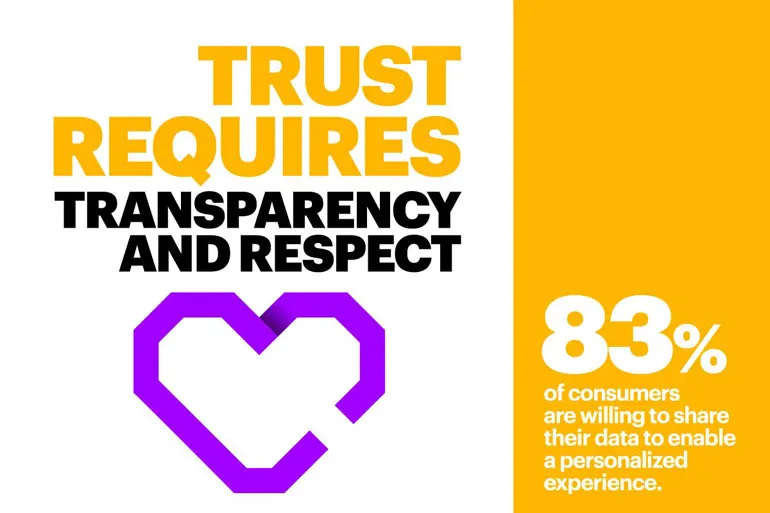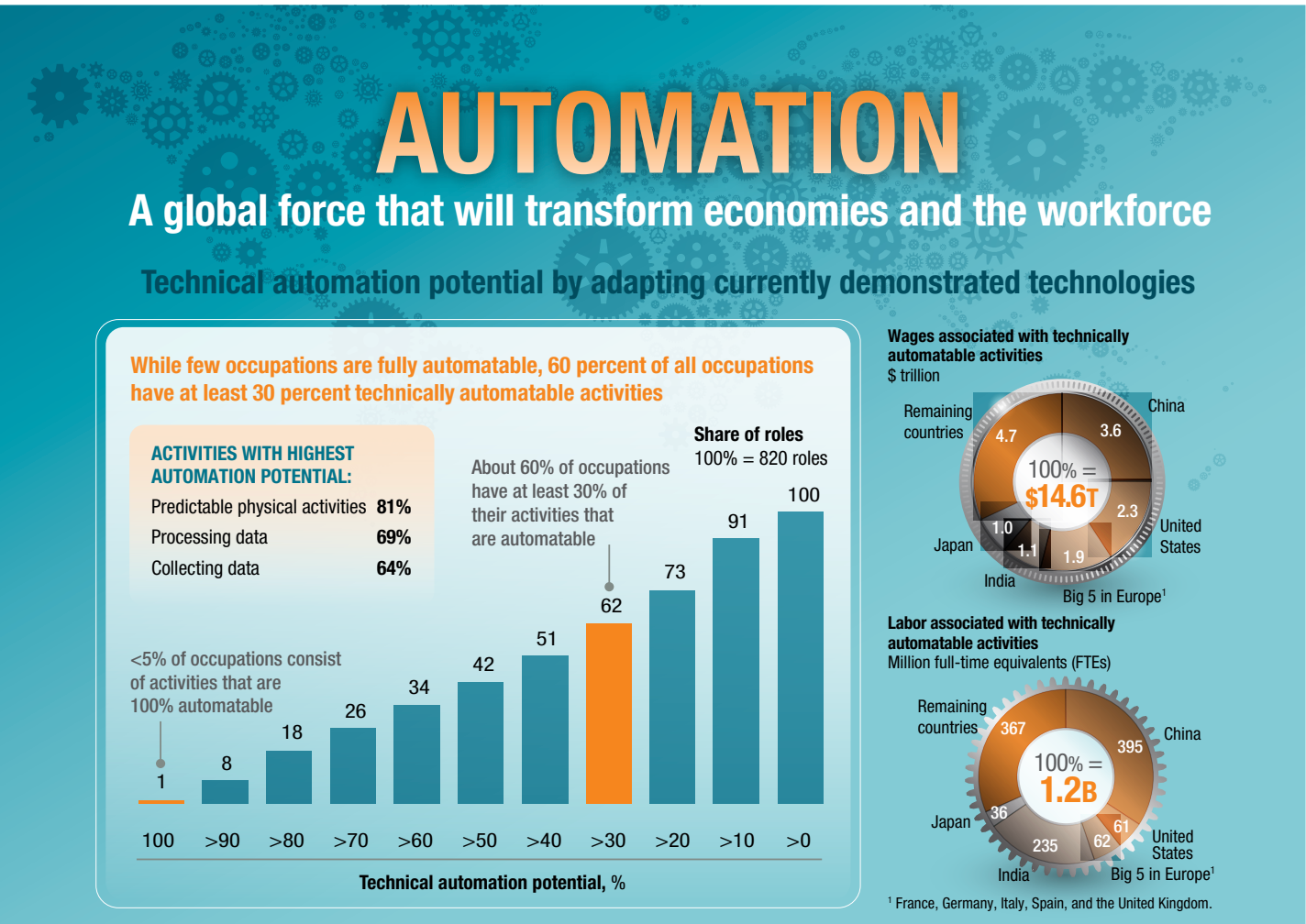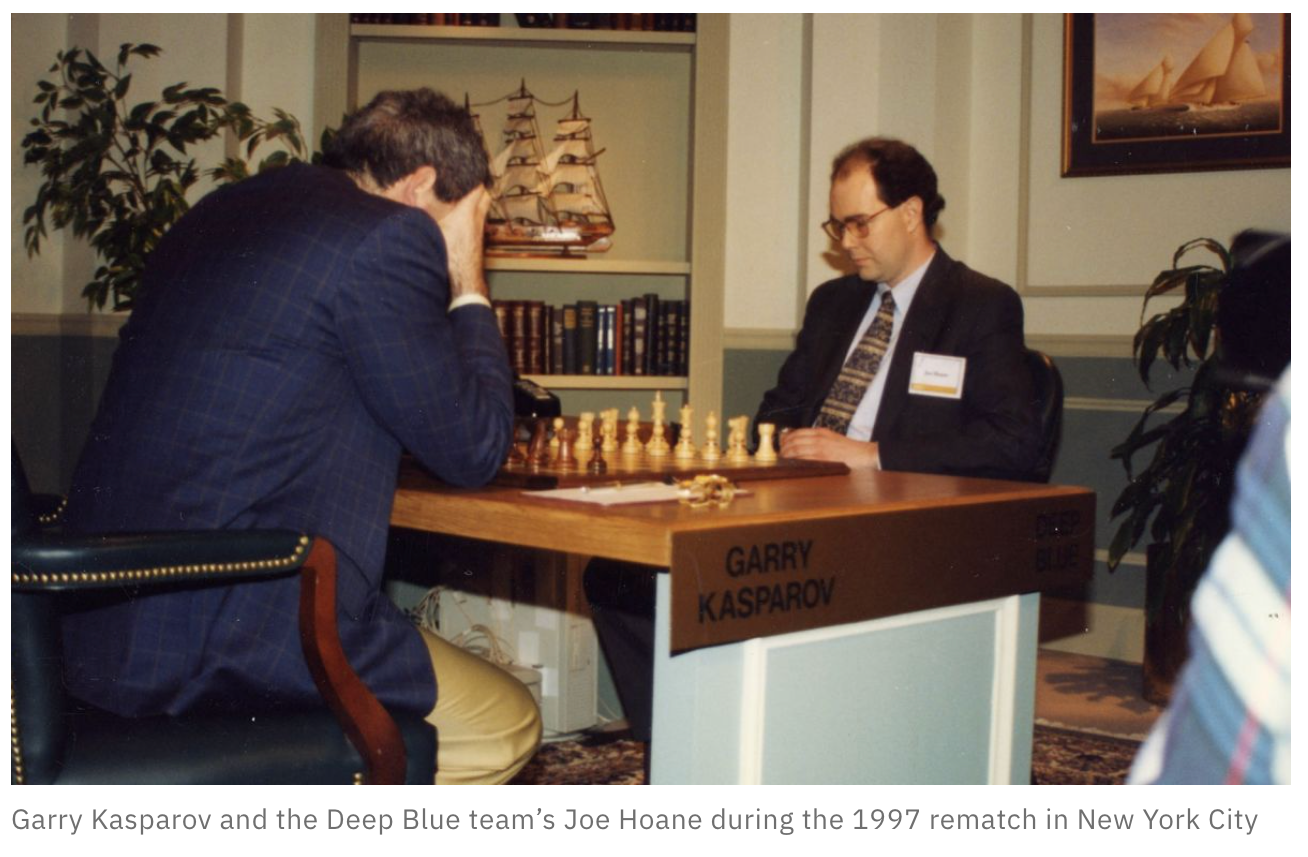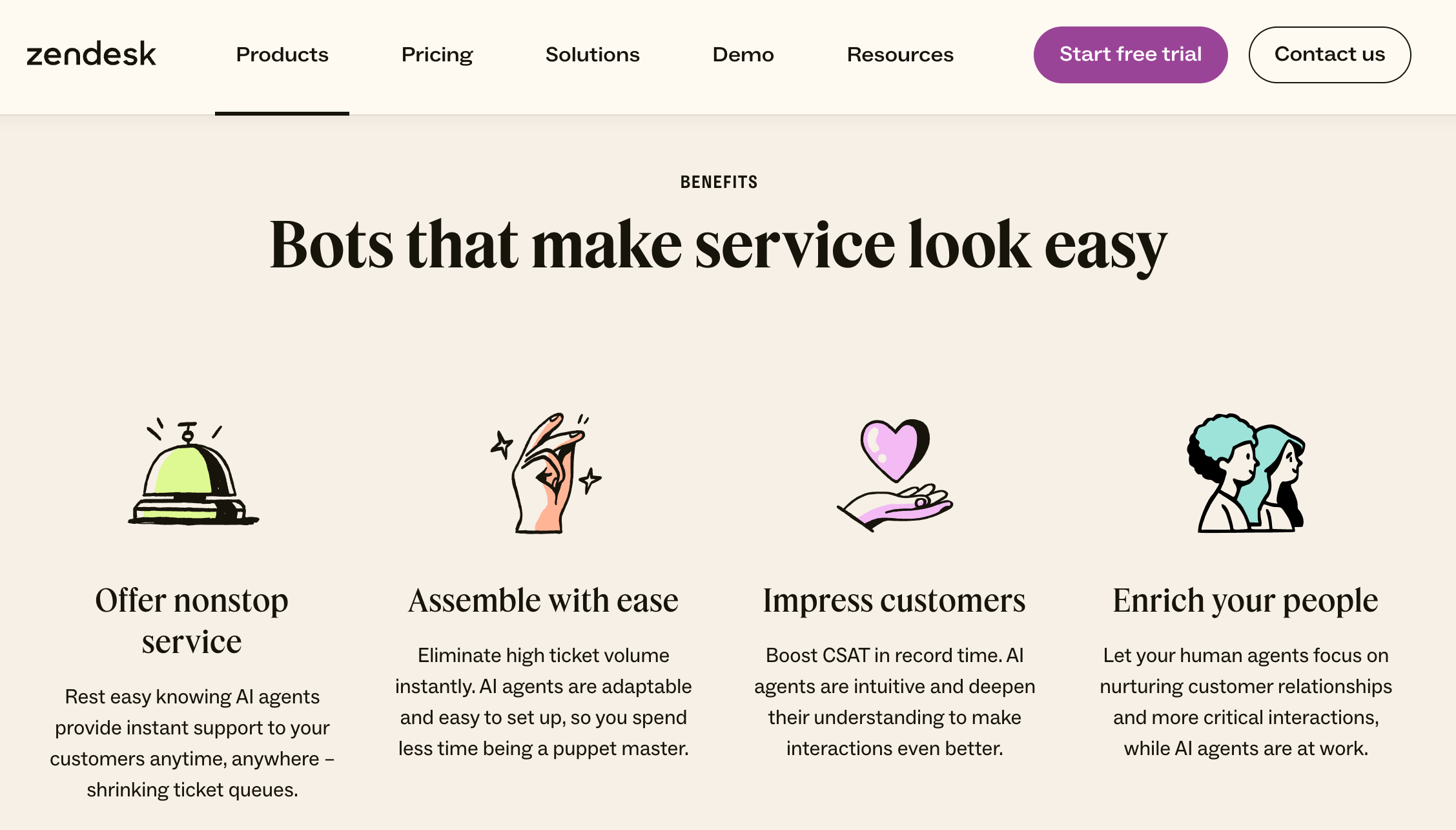Published on: April 17, 2024
AI Communication Automation: Easy Steps to Optimize Workflows
Author: Inge von Aulock

AI communication automation isn’t just a fancy tech buzzword. It’s a game-changer.
In a world where over 2.5 quintillion bytes of data are created daily, akin to filling the Library of Congress 500 times over with new information, AI communication automation is the secret weapon to navigate this digital deluge.
This isn’t about replacing human touch with robotic efficiency. It’s about enhancing human capabilities, making communication more effective, and driving business growth.
Ready to harness the power of AI in your communication processes? Let’s delve into the data-backed benefits and practical applications of AI communication automation.
Unleashing the power of AI in communication automation
- AI communication automation is revolutionizing the digital world, transforming communication processes for increased efficiency and effectiveness.
- AI-driven communication tools are playing a pivotal role in this transformation, with numerous applications across various industries.
Understanding AI communication automation
Artificial Intelligence (AI) communication automation is the application of AI technologies to automate and enhance communication processes. It’s a game-changer in the digital world, where rapid, efficient, and effective communication is paramount.
It’s not just about speed; it’s about understanding and responding to communication in a more human-like manner, making interactions more personalized and meaningful.
AI, and in particular, natural language processing (NLP), is transforming communication processes in a myriad of ways. From chatbots that provide instant customer service to AI-driven email marketing campaigns that deliver personalized content.
According to a report by Salesforce, 51% of marketers are already using AI, and an additional 27% are even planning on incorporating this technology by 2024.

The role of AI in communication
AI plays a significant role in all types of communication channels, particularly in the realm of business. AI-driven communication tools are becoming increasingly prevalent, such as:
- Chatbots
- Virtual assistants
- AI-powered CRM systems
For instance, Gartner predicts that by 2025, customer service will be handled by AI in 80% of interactions.
AI enhances communication efficiency by automating repetitive tasks, freeing up human resources for more complex tasks. For example, you can leverage AI to:
- Automate email responses
- Schedule meetings
- Analyze communication data to provide insights into customer behavior
This not only saves time but also improves the quality of communication by ensuring consistency and accuracy.
AI also enhances communication effectiveness by providing personalized communication based on individual preferences and behaviors. For instance, AI can analyze customer data to deliver personalized marketing messages, improving engagement and conversion rates.
And, according to a study by Accenture, 91% of consumers are more likely to shop with brands that provide relevant offers and recommendations, so the value of personalization is huge.
AI’s role in communication is not limited to business. It’s also being used in healthcare for patient communication, in education for personalized learning, and in many other sectors. The applications of AI in communication are vast and growing, making it a critical tool in today’s digital world.

Harnessing AI for automation: A closer look
- AI and automation are a powerful combination that can streamline business processes.
- Implementing AI in automation requires a strategic approach and adherence to best practices.
- The benefits of AI automation are numerous, including increased efficiency and cost savings.
AI and automation: A perfect match
Artificial Intelligence (AI) and automation have become a dynamic duo in the business world. AI, with its ability to learn and adapt, complements automation’s efficiency, creating a synergy that can revolutionize business operations.
For instance, AI-powered chatbots have transformed customer service by:
- Providing instant responses to customer queries
- Reducing wait times
- Freeing up human agents to handle more complex issues
The integration of emerging technologies into automation processes offers numerous benefits. A study by McKinsey Global Institute found that AI automation could raise productivity growth by 0.8 to 1.4 percent annually.

Steps to implement AI in automation
Implementing AI in automation is not a one-size-fits-all process. It requires a strategic approach tailored to the specific needs and goals of a business. Here are some steps to guide you:
- Identify the need: The first step is to identify the areas in your business that could benefit from AI automation. This could be anything from a specific communication channel, to broader customer service needs and even to supply chain management.
- Choose the right AI technology: There are various types of AI technologies available, each with its strengths and weaknesses. It’s crucial to choose the one that best fits your business needs.
- Train the AI: AI systems learn from data. Therefore, it’s essential to provide them with high-quality, relevant data for training. This is the only way you’ll get truly valuable insights.
- Monitor and adjust: After implementation, it’s important to monitor the AI system’s performance and make necessary adjustments.
Remember, successful AI implementation in automation requires a commitment to continuous learning and adaptation. According to a report by Accenture, companies that successfully implement AI could increase their profitability by an average of 38%.
To answer the question, “How can AI be used for automation?” AI can be used with automation for countless use cases, but here are just some to consider:
- Streamline business processes
- Increase the efficiency of your support team
- Reduce costs
- Automate repetitive tasks
- Provide actionable insights from data analysis
- Improve customer service through AI-powered chatbots
In terms of home automation, AI can be used to control smart devices, provide security, and even predict user behavior for energy efficiency. For example, Google’s Nest Learning Thermostat uses AI to learn a user’s schedule and adjust the temperature accordingly, leading to significant energy savings.

Exploring the four types of AI technology
- Uncover the four types of AI technology: Reactive Machines, Limited Memory, Theory of Mind, and Self-Awareness
- Understand how each type of AI technology contributes to communication automation
An overview of AI technology types
AI and machine learning technology is not a monolith; it’s a complex field with various types, each with its unique capabilities and applications. The four primary types of AI technology are Reactive Machines, Limited Memory, Theory of Mind, and Self-Awareness.
- Reactive machines: Reactive machines are the most basic type of AI. They can’t form memories or use past experiences to inform current decisions. Instead, they react to specific inputs with specific outputs. A classic example is IBM’s Deep Blue, a chess-playing AI that defeated world champion Garry Kasparov in 1997. Deep Blue could analyze millions of possible chess moves but couldn’t learn from past games.
- Limited memory: Limited Memory AI can learn from past experiences to inform future actions. This type of AI is commonly used in self-driving cars, which continuously update their knowledge base with information like road conditions and traffic patterns. However, the learning capacity of limited memory AI is confined to short-term updates, and it doesn’t have the ability to form long-term memories.
- Theory of mind: This technology represents a significant leap forward in AI. This type of AI can understand thoughts, emotions, and intentions, allowing it to interact with humans more naturally. While Theory of Mind AI is still largely theoretical, it holds great promise for fields like customer service and mental health care.
- Self-awareness: Self-awareness AI is the pinnacle of AI technology. This type of AI has a consciousness and can understand its own state. While self-awareness AI is currently the stuff of science fiction, it represents the ultimate goal of many AI researchers.

Applications of AI in communication systems
- AI is transforming communication systems, from customer service to network optimization.
- This section delves into the use cases and future trends of AI in communication systems.
AI in communication systems: use cases
Artificial Intelligence (AI) is not just a buzzword in the tech industry; it’s a game-changer in communication systems. AI’s applications in communication systems are vast and varied, with each use case bringing a unique set of benefits.
One of the most prominent applications of AI in communication systems is in customer service. AI-powered chatbots and virtual assistants are now commonplace, providing instant, personalized responses to customer queries.
For instance, IBM’s Watson Assistant is a prime example of an AI-powered virtual assistant that can understand, learn, and respond to customers in a natural, human-like way. It’s not just about answering FAQs; these AI tools can:
- Analyze customer behavior
- Predict their needs
- Offer proactive solutions
AI is also making waves in network optimization. Telecommunication companies are leveraging AI to monitor and manage their networks more efficiently. AI algorithms can analyze network traffic, predict potential issues, and even automate solutions to prevent service disruptions.
For example, Nokia’s AVA AI solution uses predictive analytics to identify network anomalies and automate fixes before they impact customers.

Future trends in AI communication systems
As AI continues to evolve, so too will its applications in communication systems. Here are some future trends to watch out for:
- AI-Powered predictive analytics: AI’s ability to analyze vast amounts of data and predict trends will be increasingly used in communication systems. This could range from predicting customer behavior to forecasting network performance.
- AI in cybersecurity: With the rise in cyber threats, AI will play a crucial role in detecting and preventing these attacks. AI can analyze network traffic and identify unusual patterns that may indicate a cyber attack.
- AI in 5G and beyond: As we move towards 5G and beyond, AI will be instrumental in managing these complex networks. AI can help optimize network performance, reduce latency, and ensure a seamless user experience.
To stay ahead of the curve in AI communication automation, it’s crucial to keep an eye on these trends. Regularly read industry reports, attend webinars and conferences, and engage with thought leaders in the field.
As we look to the future, the role of AI in communication systems will only continue to grow. So, whether you’re a business leader, a tech enthusiast, or a curious reader, understanding these applications and trends is crucial in today’s digital age.
Supplementary resources on AI communication automation
TL;DR:
- Discover top tools and platforms for AI communication automation
- Learn from real-world case studies on AI communication automation
- Access further reading and learning resources to deepen your knowledge
Tools and platforms for AI communication automation
AI communication automation is a rapidly evolving field, with a plethora of tools and platforms available to help businesses streamline their communication processes. These tools offer a range of features, from chatbots to voice recognition, and can be tailored to suit the specific needs of your business.
Recommended Tools and Platforms
There are numerous tools and platforms available for AI communication automation. Each of these tools offers unique features and benefits, making them suitable for different types of businesses and communication needs. Some of the most popular include:
- Zendesk:This is the go-to AI chatbot for customer service. Their AI agents need no code to be set up and are incredibly human-like and personal. They understand human interactions and can work alongside your human agents to optimize your processes. Using Zendesk starts at $55 per agent/month.
- ChatGPT: ChatGPT is a fantastic all-rounder for communication automation. From writing full emails to sentiment analysis of previous communication, this tool will make sure you get it right every time. The use cases are near endless, so you can incorporate it into every aspect of your business.
- Claude: Claude’s ability to analyze huge files and summarize their content gives it the upper hand compared to many other LLMs (large language models). Like ChatGPT, its automation capabilities are limitless, so you can pretty much set it to work on any communication tasks and start automating your workflows.
- SaneBox: This tool is focused only on your email inbox. It can clean up your inbox automatically after getting to know what kind of communication is important to you and what can be deleted. It can prioritize certain content so you can be as productive as possible. It starts at just $7 a month, so why not give it a go?

The final word on AI communication automation
AI communication automation is not just a trend, it’s a game-changer. It’s transforming how we communicate, making processes more efficient and effective. With the right AI technology, businesses can automate their communication systems, stay ahead of future trends, and leverage the power of AI to their advantage.
Remember, the value lies in choosing the right AI technology for your business needs and goals. The tools and platforms available today are diverse and powerful, and the case studies we’ve discussed prove that successful implementation can revolutionize communication.
So, what’s your next move? Start by identifying your communication needs. Then, explore the AI technologies and tools that can meet those needs. Don’t forget to keep learning – the resources we’ve recommended are a great place to start.
Now, a question for you: How can AI communication automation make a difference in your business? Think about it, and let’s continue the conversation.
And remember, in the world of AI communication automation, the only limit is the one you set for yourself. So, go ahead, explore, implement, and revolutionize.
Inge von Aulock
I'm the Founder & CEO of Top Apps, the #1 App directory available online. In my spare time, I write about Technology, Artificial Intelligence, and review apps and tools I've tried, right here on the Top Apps blog.
Recent Articles

Microsoft servers are down. Your business grinds to a halt. Panic sets in. Stop. Breathe. You’ve got this. This guide gives you 7...
Read More
As a business leader, you’re always searching for ways to stay ahead of the competition. What about AI in marketing and sales? In...
Read More
Struggling to keep up with the competition in 2025? You’re not alone. Small and medium enterprises (SMEs) are facing a rapidly evolving business...
Read More